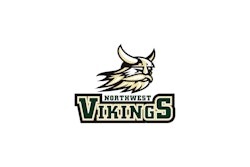
Many of us survey our members to some extent, and that's a good thing. The more direct feedback we get from members, the more we can meet and exceed their needs.
What if I told you that doing the same thing with your staff is equally important — if not moreso? If you want members to have a great experience, you must ensure your staff also has a great experience. It's time to stop guessing and start asking if your staff is happy.
Surveying your team will do more than you think. On the surface level, it gives you data and information. Organizations that take the time to survey employees demonstrate that they care. Through surveying, organizations express to their staff that their opinions matter and their voices are heard, which fosters feelings of appreciation among team members.
This has never been more important than now, during the coronavirus pandemic. In a time when team members may be unsure and apprehensive, regular surveying helps build trust and comfort.
Here are five different ways to effectively survey your team.
1. New Hire survey
This helps to establish a good relationship from the beginning. A simple survey of new hires will allow you to better understand — and thus better lead — a new team member.
Questions may include: How do you like to receive praise and feedback? Do you feel you need any more training, information or guidance to do your job well? If you could have a gift card to anywhere in the world, where would it be?
The first question offers insight into how your team member likes to interact. Some people love public praise, while some are embarrassed by it. Knowing this helps to create a better experience and happier team members. The same goes for feedback.
The second question shows you care about team members and want to make sure they are ready to go. The final example helps you to personalize rewards, which increases team member engagement and satisfaction.
Ultimately, this is a valuable way to gather information, while also letting team members know how important they are from day one.
2. Gallup Q12 survey
The Gallup Q12 is one of the most revered employee-engagement surveys in the world. Gallup is a global analytics and advice firm whose company purpose is "to know more about the will of employees, customers, students and citizens than anyone in the world. To know what matters most to them at work and in life and how those priorities change over time. To use that knowledge to create transformation."
The survey is 12 simple questions that include: At work, do you have the opportunity to do what you do best every day? In the last seven days, have you received recognition or praise for doing good work? Does the mission/purpose of your company make you feel your job is important?
This survey is a great way to measure employee engagement.
On a side note, the questions themselves are great for leadership training. Leaders should take note and make sure they are providing an environment in which employees feel compelled to answer each survey question in the affirmative.
3. eNPS survey
While NPS (Net Promoter Score) is a useful tool to measure member loyalty, eNPS (Employee Net Promoter Score) can provide a solid measure of employee satisfaction. It is a one-question survey that asks, "On a scale of 0-10, how likely are you to recommend 'Your Company' as a place to work to your family and friends?"
Like NPS, the question is accompanied by a space for comments. Team members responding with a 9 or a 10 are considered promoters. They love working at your facility. Responses of 7s and 8s are considered passives. They like working at your facility, but may not love it. Detractors score a 0 to 6. They don't like working at your facility.
The calculation for the staff at large is as follows: Employee Net Promoter Score equals the percentage of Promoters minus the percentage of Detractors. The higher the score, the better.
What is particularly actionable about eNPS is that it gives you a metric (score) with which to track and set goals. It is easy to see trends and patterns and make adjustments and decisions accordingly. Moreover, the comments provide additional information to help you improve the team member experience.
4. Start, Stop and Continue survey
This relatively new survey is sometimes referred to as Stop, Keep Doing, Start Analysis. Leaders often use this method to collect team member feedback on how to better manage an organization.
Ask your team the following: What should we start doing that we currently are not? What are we currently doing that we should stop? And, finally, what are we doing that we should keep on doing? The survey uncovers answers that are pretty straightforward and helpful as you strive to best meet the expectations of your team.
As an example, when this was done with our welcome desk staff, we received some enlightening responses:
Start doing more training on the facility equipment. The team didn't feel educated enough to assist members when they needed help. This information allowed us to add equipment training to our ongoing training schedule.
Stop sharing NPS every day. I was a big fan of sharing the ups and downs of our member NPS every single day on our internal Facebook page. While the team understood the importance or NPS, hearing that it went up or down a point every day was too much and annoying. I then started sharing it weekly, which had a bigger impact.
Continue providing postcards and stamps. We piloted a program in which we provided the card and stamp and allowed our staff to send a postcard to whomever (among our membership), whenever and for whatever reason they wanted. This made the recipient members' day, and the staff enjoyed doing it.
5. Meeting Effectiveness survey
The most popular question asked after a meeting is, "How was the meeting?" The only way to assess meeting effectiveness is to ask the people in attendance.
In this type of survey, it is common to have team members respond with "strongly disagree," "disagree," "agree" or "strongly agree." Other survey statements to rank could include: "The meeting was the right length of time," "I learned something new at the meeting," and "I had the opportunity to participate in the meeting."
Just as with the other surveys, this gives valuable insight into meeting effectiveness, as well as letting the team know that their input is valuable and that you appreciate their time.
Each of these five survey types offer different and valuable information. But gathering information is only the start. If you ask for feedback, you have to act on it.
There is nothing worse for company culture and team member engagement than seeking feedback and then doing nothing. When you add team member surveys to your leadership arsenal, make sure you are prepared to take action.
I have seen tremendous increases in team member satisfaction and engagement from the consistent use of internal surveys. My advice? Pick a simple one, implement it and act on the responses. I guarantee it will have a positive effect on your team that will seamlessly transcend to your membership.
This article originally appeared in the October 2020 issue of Athletic Business with the title "5 internal surveys that boost staff satisfaction." Athletic Business is a free magazine for professionals in the athletic, fitness and recreation industry. Click here to subscribe.





































